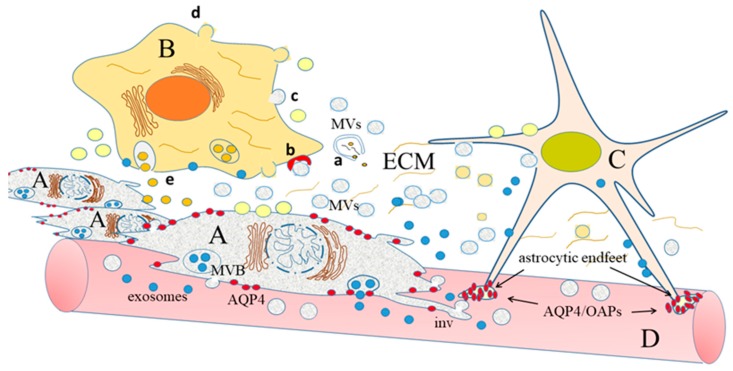Figure 1.
Cross-talk between glioma cells (A) and other cells (B,C), embedded in the extracellular matrix (ECM). The glioma cells have acquired the ability to move through the brain parenchyma, along the blood vessels (D), in small groups (guerrilla war) [23]; their invasiveness is mostly due to the extension of invadopodia (inv) and to the release of different kinds of extracellular vesicles: (i) membrane vesicles (MVs), light grey, which originate by directly budding from the plasma membrane and (ii) exosomes, blue, which are released after fusion with the plasma membrane of multivesicular bodies (MVB), components of the endosomal compartment. Both kinds of vesicles are equipped with different molecules (lipids, proteins and RNAs od different classes), which can be directly released into ECM if the vesicles break outside the cells (a). Alternatively, EVs can be bound by receptors present on the recipient cells (b), or fuse with the plasma membrane of these cells (c). Cells that receive information from glioma cells can, in turn, produce MVs, light yellow (d) and exosomes, dark yellow (e), which contain factors able to further stimulate glioma cell proliferation and invasion. In a normal astrocyte (C) AQP4 forms orthogonal arrays of particles (OAPs), localized in the cell endfeet (groups of small ovals drawn in red). In the glioma cell, AQP4 (red circles) is neither included in OAPs, nor localized; in addition, AQP4 levels are upregulated.

